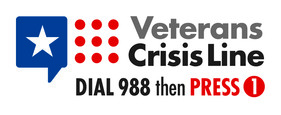The Governor has signed the 2020-21 state budget. Because of the pandemic, this budget has been characterized as a placeholder budget. The Legislature will continue to work on “budget junior” bills until it adjourns in August. These budget junior bills will augment and adjust the state budget as the pandemic and economy continue to evolve. Below are some excerpts from the Governor’s summary of the budget bill he signed which deal with veterans issues.
The entire summary can be viewed at: http://www.ebudget.ca.gov/FullBudgetSummary.pdf
Governor’s Department of Finance general comments on the budget:
The Budget closes a $54.3 billion gap in 2020-21 and significantly reduces the state’s ongoing structural deficit. Despite the global economic crisis caused by the COVID-19 pandemic, the state’s prudent fiscal management, including its structurally balanced budgets and record reserves, puts it in a much better position to contend with these challenges. The COVID-19 pandemic has impacted every sector of the state’s economy and has caused record high unemployment—almost 1 in 5 Californians who were employed in February were out of work in May—and further action from the federal government is needed given the magnitude of the crisis. The Governor continues his efforts to secure $1 trillion in flexible federal aid to state and local governments across the country. This additional support is critical to mitigate the worst effects of the public health crisis, encourage recovery, and support Californians in need.
CALIFORNIA DEPARTMENT OF VETERANS AFFAIRS
- ELECTRONIC HEALTHCARE RECORD SYSTEM
The Budget includes one-time funding of $1.2 million General Fund to begin implementation of a new information technology project for a single electronic healthcare record system to replace multiple legacy systems. The system will streamline data entry and will provide a centralized repository for the health records to modernize CalVet’s medical record keeping.
- MASTER PLAN
In January 2020, CalVet released its statutorily required Master Plan for the overall operation of the veterans homes. The Master Plan examines veteran population trends in California, the potential location of future facilities and alternate service delivery models, and includes several recommendations, some of which are reflected in the Budget as follows:
- Realigning Levels of Care—The Budget includes a plan to begin realigning levels of care by adjusting domiciliary populations at Chula Vista and Yountville and converting current Intermediate Care Facilities to Residential Care Facilities at Yountville. For example, CalVet maintains a waitlist with nearly 85 percent of applicants seeking skilled nursing or memory care, while independent living and intermediate care units are underutilized. Residents needing intermediate care will be placed in either Residential Care or Skilled Nursing Facilities based on the severity of their treatment needs. This will provide a continuum of care for residents of the veterans homes. Current residents will not be displaced and realigning levels of care will be achieved over time.
-
-
-
-
- Mental Health Services for Veterans—The Budget includes $1.1 million General Fund in 2020-21 and $2.1 million ongoing to improve behavioral health services at the veterans homes by standardizing mental health support staffing.
-
-
-
-
- BARSTOW VETERANS HOME
The Department of Veterans Affairs shall conduct at least three stakeholder meetings regarding its proposed plan for the Barstow Veterans Home during the 2020–21 fiscal year.
The Department of Veterans Affairs shall provide a report to the Legislature by February 1, 2021, on its proposed plan for the Barstow Veterans Home. The plan shall include the following:
(a) A list of the deferred maintenance needs and associated costs for the home.
(b) A description of prior actions taken to attempt to increase occupancy of the home.
(c) A transition plan of the home that is in alignment with the vision of the 2020 Master Plan that includes:
(1) A detailed transition plan that ensures that no residents of the home are involuntarily discharged without being provided alternate placement options as part of any transition efforts, and includes changes in staffing.
(2) An estimate of the cost and programmatic impacts of the plan for the home on the department’s Veterans Homes system and the methods for measuring savings and revenue losses.
(3) Options for expansion of the home’s skilled nursing facility as recommended in the 2020 Master Plan.
(4) Options for conversion of the home’s intermediate care facility into a residential care facility for the elderly as recommended in the 2020 Master Plan.
(5) An option for full closure of the home.
(6) A description of the precautions the department will take to maintain the safety of residents during the public health crisis and how the plan and timeline will be modified if the public health crisis worsens.
(d) A summary of the options discussed, and feedback received, at the stakeholder meetings required in Provision 4.












